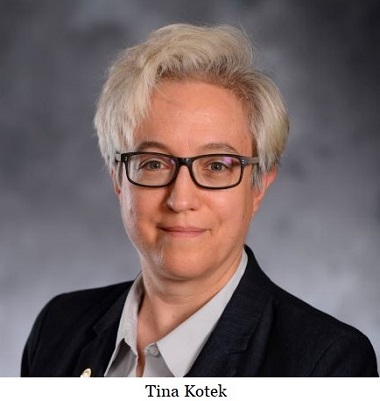
On this day, September 4, 2020, law enforcement declared an unlawful assembly and arrested 27 people after protesters marched through the streets of Portland on to a police building, where officers stood waiting outside.
 Post an Event
Post an Event
| Benton County Republicans’ Private Fundraising Event, “Bent-on Boots and Bling” with Trey Taylor |
| Friday, September 5, 2025 at 5:00 pm |
| Featuring Trey Taylor
Music Private Event
Friday, September 5, 2025 5:00-5:30 pm VIP Reception
5:30-8:00 pm Heavy Appetizers,
Auction, Concert
Red: $750 VIP Reception
Front Row Table Sponsor
White: $500 Table Sponsor
Blue: $50 per person
Limited Seating. Get Yours Now!!!
Support Local
Dress up: Bling, Cowboy, Patriotic Benton County Republican
FUNDRAISER
www.BentonGOP.org
Get your tickets today at:
https://www.bentongop.org/event-details/benton-county-republicans-fundraiser/form
About Trey:
Trey is the youngest African American Man in Country Music History. The Denver Post wrote
"It's impossible to miss his enthusiasm. With a fondness for cowboy boots, gaudy colors and dazzling jewelry, Trey Taylor could stand toe to toe with any of the Pop, Country or even Rap
contemporaries of his generation.“ |
| Trysting Tree Golf Club, 34028 NE Electric Rd., Corvallis |
Bat tests positive for rabies after biting Wallowa County resident
The Oregon Health Authority (OHA)
has confirmed that a Wallowa County resident was bitten by a bat that later tested positive for rabies. The Enterprise, Oregon resident was bitten Tuesday, Sept. 5. Winding Waters Clinic, which provides public health services in Wallowa County in partnership with OHA, was informed of the incident the same day. The bat was safely euthanized and sent to the Oregon Veterinary Diagnostic Laboratory, which confirmed Thursday the bat tested positive for rabies.
The Wallowa County resident who was bitten has begun post-exposure rabies prophylaxis, which involves an initial dose of rabies immune globulin and a rabies vaccine, as well as three subsequent vaccines at Days 3, 7 and 14, according to the Centers for Disease Control and Prevention (CDC) and OHA.
Bats are the most common carriers of rabies in Oregon. Between 5% and 10% of bats tested for rabies are positive every year. The last time a Wallowa County animal tested positive for rabies was in 2017, when a skunk was found to have rabies.
A D V E R T I S E M E N T

A D V E R T I S E M E N T
Authorities emphasize that the main protection for humans is making sure pets are vaccinated against rabies, and to avoid contact with stray animals and wildlife.
“All pet owners should make certain that their dogs and cats are vaccinated against rabies. Protecting pets from rabies can provide a buffer zone of immune animals between humans and rabid wild animals such as bats,” said Emilio DeBess, D.V.M., state public health veterinarian at OHA’s Public Health Division.
Rabies symptoms in wildlife can include lethargy, walking in circles, loss of muscular coordination, convulsions, irritability, aggressiveness, disorientation, excessive drooling and showing no fear of humans. Sick bats may be seen flopping around on the ground or otherwise acting unusual. If you see animals displaying these behaviors, do not approach or handle them, and immediately contact animal control or wildlife authorities at Oregon Department of Fish and Wildlife (ODFW) . People who find a sick bat or other sick wildlife should take children and pets indoors or into a vehicle.
Individuals who have been exposed to a bat or any animal suspected of having rabies – such as from a scratch, bite or exposure to saliva – should immediately clean the wound with soap and water and seek medical attention. Report the incident to the local Public Health department. If the bat or other animal has been captured, try not to damage the bat or animal. Keep the animal as intact as possible so it can be tested for rabies, which will help people avoid needing post-exposure rabies shots.
Public health officials advise against handling any bat or other wildlife. If it is necessary to pick up a bat or other wildlife, it is best to wear heavy gloves, use a shovel or other tools, or both.
If a pet has encountered a bat or been bitten by a wild animal, contact your veterinarian immediately or call ODFW at 541-426-3279.
--Ben Fisher| Post Date: 2023-09-15 13:09:06 | Last Update: 2023-09-14 16:26:57 |
State Treasurer is responsible to safeguard retirement investments
As reported August 31, 2023, Tobias Read, State Treasurer and Secretary of State candidate, is responsible for the Oregon Public Employee Retirement Fund (OPERF) investing approximately $5.2 million in 150,146 shares of Fox Class A stock and 76,169 shares of Fox Class B stock. A joint Oregon Department of Justice / Oregon Treasurer’s Office investigation launched earlier this year found that Fox’s management on behalf of the company harmed investors.
Attorney General Ellen Rosenblum filed a stockholder derivative lawsuit against the board of directors of Fox Corporation, the corporate parent of Fox News, for breach of fiduciary duty. She claims, “The board of Fox Corporation took a massive risk in pursuing profits by perpetuating and peddling known falsehoods. The directors’ choices exposed themselves and the company to liability and exposed their shareholders to significant risks.”
Read told the House Committee on Emergency Management, General Government, and Veterans in February, that OPERF was the “#1 performing fund in fiscal year 2022” and over the past 20 years. How did OPERF out perform the market?
Divest Oregon reported that the industry publication,
Pensions and Investments states, “OPERF did better while other state funds had negative returns, not because of doing better in publicly traded equities (stocks), which lost money even for OPERF (-13.3%) -- but because of its relative overweight of high risk “alternative” funds. 60% of OPERF is now held through alternative private contracts, such as investments in private equity, hedge funds, commodities, and real estate / infrastructure, with only around a quarter in lower risk publicly traded equities. This level of high-risk private investment is almost twice as high as most other state pension plans (34%%).” What happened to fiduciary responsibility?
Rosenblum says, "Fox News pushed narratives that appealed to their audience regardless of the facts, Fox’s Board should have been especially sensitive to risks of defamation. Yet, Fox’s business model is to promote false claims, including that murdered Democratic National Committee staffer Seth Rich provided hacked emails to WikiLeaks, and continuing through false claims that election technology companies U.S. Dominion, Inc. and Smartmatic USA Corp. rigged the 2020 presidential election."
And what does controversial reporting have to do with investment decisions? Seth Rich truth still isn’t settled with Pulitzer Prize winning investigative reporter Seymour Hersh claiming Rich was the source of DNC emails for Wikileaks. Fox News did settle a lawsuit for alleged defamation against Dominion for $787 million, somewhat short of the $1.6 billion case. That was in April 2023, but Read should have been investigating Fox returns and volatility prior to its major stock drop in May 2022.
A D V E R T I S E M E N T

A D V E R T I S E M E N T
The lawsuit, to which the New York City Pension Funds is co-plaintiff, also alleges that Fox made no good-faith efforts to monitor for or mitigate defamation risk, unlike effectively every other major media organization in the country.
“Our responsibility to safeguard the retirement investments of Oregon’s public servants is of the utmost importance,” said Treasurer Tobias Read, who is a member of the Oregon Investment Council, which sets state investment policy. “We aim to hold Fox’s board of directors, including Rupert and Lachlan Murdoch, accountable for their decisions. We believe that this action is necessary in fulfilling our obligation to our beneficiaries.”
Likewise, it is the voter’s responsibility in November 2024, to investigate and hold Tobias Read accountable for his fiduciary duty.
--Donna Bleiler| Post Date: 2023-09-15 12:11:13 | Last Update: 2023-09-14 16:19:30 |
Referendum 403 converts Oregon to Ranked Choice Voting
Editors note: This is the second in a three-part series on legislative referendums scheduled for the November 2024 election
Speaker of the House Dan Rayfield (D-Corvallis) was chief sponsor of
HB 2004 that is now
Referendum 403 on the November 2024 ballot. The referendum establishes in Oregon Revised Statutes, ranked choice voting as the statewide voting method for selecting winners of federal, state and local elections. There are currently no official titles for the 2024 referendums pending action from a legislative committee.
Rank-choice voting is an instant runoff system that can neutralize the people's will. The process is for the ballots to be recounted in rounds, eliminating the lowest candidate until one candidate has the majority of votes. Each round is a new count substituting second and third choices, so the winning candidate in round one can be overridden in subsequent rounds when second and third choices are added into the count. Too many choices distorts the method and may not reflect the voters' choice. In Oregon’s governor race, each party had over 10 choices, the process does not provide for how to limit the number of candidates, except to adopt rules.
Some say it incentivizes candidates to appeal to a broader base of voters, but it has been shown to reduce voting by demanding voters think beyond their first choice. That causes a strategy in voting that is complicated.
Crafters of HB 2004 admit this process is so confusing they provided for a program to educate voters about how ranked choice voting will be conducted in elections. This bill is hard to decipher, but appears to allow two tally methods. It requires major political parties to use ranked choice voting for the primary and the general election only for federal offices, Governor, Secretary of State, State Treasurer, Attorney General, and nonpartisan BOLI office. Other nonpartisan offices, state and local, may, but not required to use ranked choice voting to determine the winners in the primary – in the manner they do now. The Secretary of State may tally all ballots cast using ranked choice voting. What’s missing from the list of mandated offices required to use rank choice voting are State Senators and State Representatives.
Should voters add a process that is so confusing that it requires the expense of an ongoing education program for voters, new and old, to understand? That is the basis behind Marc Theilman’s lawsuit, Theilman vs. Fagan, which has advanced to the 9th Circuit Court. It challenges voter laws as being the cause that people have lost confidence in our elections. It is a constitutional requirement for government to maintain the confidence of the people. His remedy is to go back to one-day voting, presenting ID, signature matching, and count ballots by hand.
Janice Dysinger, Oregonians for Fair Elections, says, “Ranked choice voting will further alienate the people of Oregon who want to have a fair and accountable system they can observe in the election process. Ranked choice voting totally relies on computer programming and tabulators without a way to audit the results. Any recount efforts would be a rerun of the same program. We have seen other states with systems that are not different from ours that have their count corrupted by people who just program the count for a different outcome than the one the people voted for through back doors in the machine systems. We need to return to an accountable system that the people can observe and verify in the process.”
In 2019 the Oregon Legislature passed the National Popular Vote for presidential contests. It passed based on the premise that every vote counts because the vote of each voter in the U.S. carries equal weight. Equal weight does not produce fair representation when small states are lumped into a compact with larger states – it’s the rural/metro scenario on a larger scale. Small states lose their voice. The Electoral College weighs every vote so smaller states are weighted more than larger populated states giving Oregonians a 1.3 vote value compared to California or New York's 1.0 vote value. Oregonians would forfeit vote value, which takes away voter sovereignty when yielding to the popular votes of more populated states.
HB 2004 incorporates the use of ranked choice voting if the National Popular Vote is triggered. Since the National Popular Vote compact was never voted on by voters, a vote for ranked choice voting simultaneously may also be a vote of approval for the National Popular Vote.
A D V E R T I S E M E N T

A D V E R T I S E M E N T
“Every vote counts” is even less true for ranked choice voting. As the ballots continue to be recounted in each round, the candidate with the fewest votes is eliminated, but so are voters whose choices are eliminated. The final tally will only count ballots that voted for the candidates left in the running, allowing their ballots to be counted more times than those eliminated, whom have no vote in the final decision. So, if your candidate didn’t win, it's possible that your vote wasn’t counted in the winning tally. No ballot should be counted more than one time to be equitable.
Representative E. Werner Reschke (R-Crater Lake) asks,” how many more voters will incorrectly fill out their ballot? How many voters will know voting for their second choice or third choice could accidentally knock out their first choice — their real choice — from the winner’s circle?... Why would we want to make the ballot even longer and more complicated with more choices? Ranked Choice voting could very well discourage voting because ballots could end up being multiple pages long… Ranked Choice voting’s complexity can and will only delay election results on more races and therefore bring further confusion and doubt to the integrity of our system.”
Reschke also asked about equipment to handle a new system that can tabulate ranked choice votes. What is the need for more trained staff and will the state dedicate tax payer funding to cover costs? “Overall, I believe Ranked Choice voting treats Oregonians like children who can’t decide
who they want to win for a particular race. I much rather regard my fellow citizens, 18 and older, as adults. Our most important laws certainly do, and so ought our election process.”
If passed, ranked choice voting would apply to elections and nominations occurring on or after January 1, 2028. A lot of effort is going into exposing the vulnerability of the use of internet tabulators and the possible presence of fraud. Referendum 403 may be viewed as having to many risks until voter confidence is regained.
--Donna Bleiler| Post Date: 2023-09-15 10:18:35 | Last Update: 2023-09-14 16:23:23 |
One rural school district’s refusal to protect students from potential predators
Editor’s note: Due to the employment at the same school district of another Ms. Hill the author has used the first name of a person frequently mentioned in this article.
School safety plans mostly allude to threats of explicit violence in schools, such as mass shootings and bomb threats. Schools have written ample policies and its employee unions are some of the most ardent opponents of the 2nd Amendment. However, a more likely danger to student safety is the presence of child predators in schools. Surprisingly, Oregon law and school policy can be unbelievable inept in protecting children. This is not only an issue for large urban districts, but small rural districts, such as Nestucca Valley School District in Tillamook County.
In April 2023, Jessica Starr obtained a stalking order against Special Education Teacher Chelsea Hill for grooming her 12-year-old daughter, Bridget. According to testimony by the student’s mother, Jessica Starr, Chelsea Hill sustained a relationship with her daughter Bridget through her employment at Nestucca Valley School District and through secret messages sent to Bridget’s phone under an alias. The copies of these messages show frequent offers of special food and treats; solicitation of information about the activities, locations, and future plans of Bridget, her family, and extended family members, and videos sent from Chelsea Hill to Bridget about narcissistic mothers.
Despite the evidence and the court order, Nestucca Valley School District not only retained Chelsea Hill as an employee in close proximity to Bridget, but also developed a plan that would not guarantee elements of the stalking order be enforced. While the school plan did attempt to keep Chelsea Hill from being “knowingly within 150 feet” and to have no contact “via electronic communications” from the girl, it still maintained that there would be possible visual contact. Under Oregon law stalking order requires the that the stalker not knowingly come into visual contact or be outside the school of the victim. The school’s failure to fully implement the stalking order forced, Bridget’s mother to pull her from Nestucca and be placed in a local private school.
A D V E R T I S E M E N T

A D V E R T I S E M E N T
To be fair the matter is complicated, given that Jessica Starr is the fiancée of Jason Hill, Chelsea Hill’s ex-husband, of whom they share a son. This son, up until the time of the stalking order, had regular court ordered parenting time with Mr. Hill. He was sometimes with Bridget when messages were being exchanged, but they were on Bridget’s phone not the son’s. Since the stalking order, Chelsea Hill has refused to follow the parenting time agreement with Mr. Hill and has recently been redirected by a judge to follow the previous order. At the time of this publication Chelsea Hill has refused to submit a comment.
Furthering Nestucca’s entanglement with Chelsea Hill’s legal issues, at the September 1st hearing concerning maintaining the stalking order two school employees, including the Special Programs Director, were in attendance during normal working hours to aid Chelsea Hill in her defense. Chelsea Hill has refused counsel in her legal defense. The Special Programs Director refused to comment at the time of the publication of this article on her attendance or whether she was receiving pay from the school during this trial. Nestucca Superintendent Misty Wharton, did respond to these questions, stating, “the district does not provide comment about personnel.” The stalking order hearing will continue on October 13, 2023.
August 10th brought more disturbing news for Nestucca Valley School District: Former Nestucca school teacher and recent Nestucca Valley School District Board candidate, Russ Sanders, was charged and arrested for Sex Abuse -- Rape and a Fugitive for another state. The charge has been downgraded to Sex Abuse I -- Incest, and Russ Sanders has been released to the other state’s jurisdiction.
Russ Sanders told voters during the election that he had worked in the last school year with the Nestucca Valley Smart Reading program. The Smart Reading program is a state wide program that brings volunteers into the school to read and distribute books to students. The organization requires volunteers to be “culturally affirming” and submit to a background check. Under Oregon state law (Required Background Checks by Education Providers ORS 339.374 and Background Check Policy for Volunteers ORS 326 607) schools may utilize a state or national background check. In Russ Sanders' case, this is a concern because his out of state charges mean there is no documentation of his alleged criminal behavior in Oregon.
Russ Sanders was endorsed by both the Tillamook County Democrat Central Committee and TREAT, Tillamook Retired Educators and Teachers during his bid for the Nestucca Valley School Board and ran with current school board members Joseph Boyd, Diane Boisa, and Wally Nelson. He lost to Zachary Best by only 5 votes. Nestucca has not released a public statement about Russ Sanders’ arrest despite his previous work in the school district with vulnerable students, including nonverbal, disabled students.
What was the response when Nestucca school board was asked why they had not notified the public of this incident?
Joseph Boyd, Vice Chair of the NVSD Board stated, “We are not responding to the charges against Mr. Sanders because they happened out of state.”
Their response to why they retained employment and did not notify the public of the stalking order for grooming a student attending Nestucca K8 (grade school) was, “We do not discuss employee issues.” This was as they gaveled out the speaker for asking these questions during public comment at the August 2023 school board meeting. The board had previously denied both Jessica Starr and Jason Hill their free speech rights during public comment at a May special school board meeting when they filed a complaint against Superintendent Wharton for her handling of the stalking order against Chelsea Hill. The Nestucca Board concluded that Superintendent Wharton “followed the law” and would not be referred for discipline. Amidst these controversies Nestucca Valley School Board is preparing to appoint a new school board member after the resignation of Board Chair Shane Stuart.
A D V E R T I S E M E N T

A D V E R T I S E M E N T
However, Nestucca has both commented on former employees who have been charged with sex crimes outside the district and notified the public. Although the Facebook post has been removed, the arrest of former Nestucca teacher David Michael Brandon was publicly acknowledged by the district. David Michael Brandon was arrested for sodomy and supplying minors with marijuana in Clatsop county. David Michael Brandon has been convicted and served his 90 days in jail for
this crime.
Nestucca Valley School District has since been asked what their policy was concerning retaining an employee or volunteer standing trial for allegedly harming a child and notifying parents of students of such an accusation? Their response was that they were following policy, but no specific policy was cited and the link sent was to the entire policy manual of the district.
Those who defend gender ideology being taught and promoted in our schools are sometimes labeled groomers. There is no doubt that there is amble opportunity to groom students in all kinds of ideology in the classroom: While it may be an unacceptable ideology or tactic it is a predictable outcome. However, one would hope all taxpayers would agree that actually grooming children for exploitation emotionally and physically should be totally unacceptable. Oregon law and schools must place the safety of children as its highest priority, and school shootings are less probable than abuse by an adult.
Since publication, Superintendent Wharton of Nestucca Valley School District has informed the public that the date of the trial mentioned in this article was not a “regular, work day.”
--April Bailey| Post Date: 2023-09-15 06:22:59 | Last Update: 2023-10-19 07:20:37 |
“The clear language of Measure 113 allows me to run one more time”
Senate Republican Leader Tim Knopp (R-Bend) has filed for re-election to Senate District 27, the seat he has held since 2012. “The clear language of Measure 113 allows me to run one more time.” Knopp said. “Oregonians are fed up with the ‘tyranny of the majority’ over the past decades."
According to Senator Knopp, "Senate President Rob Wagner drove the 2023 session into the ditch. He led the Senate Majority in breaking the Senate rules, breaking Oregon law and ignoring the Oregon Constitution. Wagner left Senate Republicans no choice but to stand for principle and rule of law. In response, Wagner in an arbitrary and capricious manner retaliated by assigning us unexcused absences. While senators continued to perform their duties of their offices at the Capitol, the denial of quorum brought this lawlessness to an end.”
The exact language of Measure 113 in the voters pamphlet was:
Amends Oregon Constitution to add language prescribing consequences for unexcused absences by legislators from floor sessions. Currently, Senators and Representatives may be 'punished' or, by the concurrence of two-thirds of the Senator’s or Representative’s chamber,
'expelled' for 'disorderly behavior,' but law does not define 'disorderly behavior.' Additionally, absent legislators may be 'compelled' to attend legislative floor sessions, but current law does not specify consequences for unexcused absences. Measure specifies that 'disorderly behavior' includes legislator’s failure to attend ten or more legislative floor sessions during a regular or special legislative session without permission or excuse. Under measure, legislator who engages in 'disorderly behavior' through unexcused absences is disqualified from serving as a Senator or Representative for the term following the end of the legislator’s current term.
A D V E R T I S E M E N T

A D V E R T I S E M E N T
Senator Knopp concluded, “Cities have failed to address homelessness and housing affordability across Oregon. Senate Republicans will be bringing these issues back to the 2024 session, since Senate Democrats failed to pass these needed changes in the 2023 session.”
--Staff Reports| Post Date: 2023-09-14 16:48:08 | Last Update: 2023-09-14 16:57:47 |
Another $26.1 million to be spent on homelessness in Oregon
Oregon Governor Tina Kotek
has now announced spending allocations to counties within Oregon's
Balance of State Continuum of Care as part of her homelessness state of emergency, as well as the specific outcomes attached to these emergency dollars.
The funding comes from
House Bill 5019, approved by the Legislature and signed by Governor Kotek in response to her homelessness state of emergency. The bill, among other allocations, included $26.1 million to rehouse people experiencing homelessness and expand shelter capacity in the 26 rural counties that make up the Balance of State Continuum of Care.
Kotek says that this funding aims to reduce the number of people experiencing unsheltered homelessness by adding at least 100 new shelter beds and rehousing at least 450 households by June 30, 2025.
“Homelessness is a crisis in both urban and rural communities throughout Oregon,” Governor Kotek said. “In many conversations during my 36-county listening tour, Oregonians have repeatedly emphasized the need for more shelter capacity and rehousing services in their communities. This funding, tied to specific outcomes, will make a measurable impact in addressing this crisis in rural Oregon. And we can’t stop here – I will keep pushing for concrete solutions that will support community needs going forward.”
A D V E R T I S E M E N T

A D V E R T I S E M E N T
The following funding amounts are based on many factors, including the appropriation made available by the Legislature, detailed plans that local communities submitted, and a distribution formula developed by the Oregon Housing and Community Services Department:
- Baker, Grant, Union and Wallowa counties: $1.2 million to rehouse at least 33 households
- Benton County: $2.4 million to add at least 50 shelter beds and rehouse at least 31 households
- Clatsop County: $3.8 million to add at least 80 shelter beds and rehouse at least 33 households
- Columbia County: $867,453 to rehouse at least 20 households
- Coos County: $1.9 million to add at least 8 shelter beds and rehouse at least 32 households
- Curry County: $594,000 to rehouse at least 14 households
- Douglas County: $1.4 million to rehouse at least 34 households
- Gilliam, Morrow, Umatilla and Wheeler counties: $2.1 million to add at least 25 shelter beds and rehouse at least 40 households
- Harney and Malheur counties: $1.3 million to rehouse at least 34 households
- Hood River, Sherman and Wasco and counties: $1.9 million to add at least 34 shelter beds and rehouse at least 29 households
- Josephine County: $2 million to add at least 16 shelter beds and rehouse at least 31 households
- Klamath and Lake counties: $1.4 million to rehouse at least 38 households
- Lincoln County: $856,178 to add at least 70 shelter beds and rehouse at least 16 households
- Linn County: $1.9 million to add at least 30 shelter beds and rehouse at least 32 households
- Tillamook County: $769,404 to add at least 20 shelter beds and rehouse at least 12 households
- Yamhill County: $1.3 million to add at least 14 shelter beds and rehouse at least 21 households
Communities established 16 Local Planning Groups with designated leads to coordinate and create a plan to achieve the outcomes.Kotek says that the local Planning Groups are made up of experts from local governments, non-profits, and people with "lived experience" of homelessness. She says that these groups will be responsible for the implementation of funds to help move individuals and families into housing stability.
Kotek says that local Planning Groups submitted 29 shelter projects for consideration, with a total request of over $37 million
--Ben Fisher| Post Date: 2023-09-14 11:10:08 | Last Update: 2023-09-14 16:20:34 |
Referendum 402 creates a commission to determine top public official salaries
Editors note: This is the first in a three-part series on legislative referendums scheduled for the November 2024 election
Three Legislative measures will be referred to the people of the State of Oregon in the November 2024 Election -- in addition to whatever the citizens' initiative process will produce.
SJR 34 amends the Oregon Constitution to establish an Independent Public Service Compensation Commission;
HJR 16 adds an impeachment process to the Oregon Constitution; and
HB 2004 establishes ranked choice voting as the statewide voting method for selecting winner of federal, state and local elections.
The statutory ballot title process was supplanted by the 2023 Legislature by passing
SB 28, which creates a joint legislative committee to prepare the ballot titles and explanatory statements for referendums referred to the ballot during 2023 regular session. Senate President Rob Wagner (D-Lake Oswego) is to appoint three legislative members and Speaker Dan Rayfield (D-Corvallis) three. The committee has until March 12, 2024 to complete the process giving the electors time to petition the Supreme Court with any objects on how the title or explanation is written. Deadlines associated with the ballot title and explanatory statement will be drafted in Administrative Rule. In the meantime, there are no official titles for these three Referendums.
This article is the first in a three-part series that examines SJR 34,
Referendum 402, which proposes amending the Oregon Constitution to create the Independent Public Service Compensation Commission giving it authority to decide salaries for the listed public officials paid from the General Fund.
The commission would establish salaries for the following officials:
- Governor
- Secretary of State
- State Treasurer
- Attorney General
- Commissioner of the Bureau of Labor and Industries or any successor agency
- Judges of the Supreme Court
- Judges of other courts under the administration of the judicial branch of state government
- State Senator
- State Representative
- District attorneys
Upon the commission’s adoption of its determinations, the state is then obligated to budget moneys from the General Fund sufficient to pay the salaries determined by the commission as they deemed to be appropriate.
Prior to 1956, salaries for the Governor, Secretary of State, State Treasurer, and Supreme Court Judges were stated in Article XIII of the Oregon Constitution and it took a vote of the people to change their salaries prior to its repeal.
This isn’t the first time a commission has been proposed to determine state salaries. It was used twice before to review and make recommendations to the Legislature on salaries for certain state public officials. The ideology is a separation of compensation from political pressures will produce a fair approach.
Oregon's previous version of a Public Officials Compensation Commission was first established by legislation in 1983, but all positions became vacant in 2000. Legislation was again enacted in 2007 to revitalize the Commission with new membership and a revised scope of work. The Commission’s 2008 recommendations were introduced amidst the Great Recession, and the Legislature ultimately declined to increase compensation for public officials. The Commission went unfunded after 2008 and was eliminated in 2017 along with other state boards and commissions identified as inactive or obsolete.
By making the commission a constitutional mandate, it removes the latitude of the legislature to respond to economic abnormalities.
To avoid the delay or final approval by the legislature, the commission is given full authority to implement salaries they deem appropriate. That puts a lot of weight on selecting nonpartisan members that have an understanding of the salaries they implement has on the economy and state budget.
Unfortunately, SJR 34 and Referendum 402 does not define how the committee is selected. It only prohibits state employees or officers or family members, and lobbyists or family members from serving, and allows the legislature to add other classes of individuals.
A D V E R T I S E M E N T

A D V E R T I S E M E N T
Chief Justice of the Oregon Supreme Court, Meagan Flynn, claims it “will help ensure that we can attract and retain highly qualified people to those offices of public service.”
The National Conference on State Legislatures (NCSL) found that 21 states set compensation for lawmakers with input from an independent commission, as Oregon has done in the past. Certain states also rely on independent commissions in setting compensation or benefits for selected other statewide officials, which may include members of the executive or judicial branches.
However, what is appropriate compensation may have the consequence of reducing other services or raising taxes when fixed outside of the budget process. We see a form of this when teacher salaries are lobbied by unions and set prior to school districts knowing what the legislative budget will give them. That sometimes means cutting staff. Voters are given the task to decide if they want to give up their voice when it comes to salaries for the highest officers in the state.
--Donna Bleiler| Post Date: 2023-09-14 10:19:16 | Last Update: 2023-09-14 16:22:55 |
“We have been trying to solve these issues for a long time”
On September 12, 2023, Marion County
filed a lawsuit against the Oregon Health Authority and the Oregon State Hospital in Marion County Circuit Court. The County is asking the Court to order the State to comply with its statutory obligation to evaluate and treat individuals with pending criminal charges unable to aid and assist in their own defense and who require behavioral health restoration services at the State Hospital.
“This action is not something that we take lightly,” said Commissioner Colm Willis. “We have been trying to solve these issues for a long time. The State needs to fulfill their responsibilities to the individuals needing critical treatment and to the citizens that are paying taxes for them to do the job that the law says is their responsibility.”
The Marion County Commissioners say that for too long, the State has failed to meet its legal obligation to fund, build, and staff sufficient beds for the growing number of Oregonians who need inpatient behavioral health restoration services. By Oregon law, only the State can provide or contract for this inpatient hospital level of restoration care. The Commissioners point out that it has failed to do so. Instead, sicker and more violent people are being pushed out into the community where their behavioral health restoration needs simply cannot be met. The State's failure to provide sufficient inpatient capacity has had severe, devastating impacts on livability and public safety in the county.
A D V E R T I S E M E N T

A D V E R T I S E M E N T
“Local governments and communities are feeling and seeing the negative impact of the choices being made at the state level and are bearing the brunt of the State’s inability or unwillingness to do what it is legally required to do,” said Commissioner Danielle Bethell.
The Marion Commissioners are saying that they will now seek a court order to require the State to fulfill its legal responsibility to provide sufficient staff, facilities, and other resources required for inpatient restoration to assist individuals in their own defense, as well as an order for the State to procure theose resources.
--Ben Fisher| Post Date: 2023-09-14 06:05:11 | Last Update: 2023-09-14 16:21:07 |
She has made drought declarations in 12 counties this calendar year
Oregon Governor Tina Kotek
has declared a drought in Gilliam, Douglas and Lincoln Counties through Executive Order 23-20 and Executive Order 23-22, and directed state agencies to coordinate and prioritize assistance to the regions.
Drought conditions are variable throughout Gilliam County, ranging from abnormally dry to severe drought. Moderate drought conditions have continued to spread across the county since the beginning of water year 2023. Precipitation since the beginning of the water year on October 1, 2022, has been well below average, with most of the county receiving less than 75% of usual precipitation to this point in the year.
Douglas County is experiencing below to well below average streamflows, with some streams measuring record low flows. The reservoir storage in the Rogue River Basin Project is also measuring below average. The county has experienced below to well below average precipitation over the water year and over the past 90 days, with May through July being the sixth-driest period on record.
Lincoln County has experienced a significant deficit in precipitation over the past 90 days compared to historical norms. Streams in Lincoln County are measuring below to well below average flows, and several streams have measured record low streamflows for extended periods of time. Drought signals indicate short-term drought conditions equivalent to exceptional drought due to warm, dry conditions.
Drought is likely to have a significant economic impact on the farm, ranch, recreation, tourism and natural resources sectors. Drought also impacts drinking water, fish and wildlife, and important minimum flows for public instream uses and other natural resources dependent on adequate precipitation, stored water, and streamflow in these areas.
A D V E R T I S E M E N T

A D V E R T I S E M E N T
Extreme conditions are expected to affect local growers and livestock, increase the potential for wildfire fire, shorten the growing season, and decrease water supplies.
The drought declaration by Governor Kotek unlocks a number of drought-related emergency tools for water users, including assistance to local water users. Drought declarations also allow the Water Resources Department to expedite review processes and reduce fee schedules.
The Oregon Drought Readiness Council, a standing body composed of natural resource, public health, and emergency response agencies, received requests from the Boards of Commissioners in Douglas, Gilliam and Lincoln counties requesting the Governor’s drought declarations.
The Council received input from Oregon’s Water Supply Availability Committee on regional water supply conditions and Council members have conferred on this matter. The Council recommended that the Governor declare drought in Gilliam and Douglas counties for the 2023 calendar year, pursuant to Oregon Revised Statutes (ORS) 536.740.
As state and local officials coordinate with federal partners, conditions will be closely monitored by the state’s natural resource and public safety agencies, including the Oregon Water Resources Department and the Oregon Department of Emergency Management.
Governor Kotek has now made drought declarations in 12 counties this calendar year.
--Ben Fisher| Post Date: 2023-09-10 22:40:09 | Last Update: 2023-09-10 22:51:44 |
Timberlands are being closed down in case the spotted owl comes back some day
Editor’s note: This is the third in a multi-part series on the Oregon Department of Forestry's Habitat Conservation Plan and how it impacts wildlife and communities
The Oregon Department of Forestry's
Habitat Conservation Plan is on the verge of being adopted and will impact Oregon forest management. Covered species -- those for which an incidental take permit will be needed -- are those species for which USFWS and NOAA Fisheries will provide take authorization to the Oregon Department of Forestry to authorize take that may occur during the implementation of covered activities. Species were selected for coverage if all four of the following criteria were met:
- The species range overlaps with the permit area.
- The species is currently listed under the ESA or is likely to become listed during the permit term.
- The species is likely to be impacted by covered activities.
- There is enough data available to adequately assess the potential for covered activities to impact the species and to create a conservation strategy for the species that will adequately avoid, minimize, and mitigate the impact of any taking of the species that occurs from covered activities.
| Species |
| Fish |
| Oregon Coast coho |
| Oregon Coast spring-run chinook |
| Lower Columbia River chinook |
| Lower Columbia River coho |
| Columbia River chum |
| Upper Willamette River spring-run chinook |
| Upper Willamette River winter steelhead |
| Southern Oregon/Northern California Coast coho |
Southern Oregon/Northern California Coastal
spring-run chinook |
| Eulachon |
| Birds |
| Northern spotted owl |
| Marbled murrelet |
| Amphibians |
| Oregon slender salamander |
| Columbia torrent salamander |
| Cascade torrent salamander |
| Mammals |
| Coastal marten |
| Red tree vole, North Oregon Coast population |
Covered activity categories include:
- Timber Harvest
- Stand Management
- Road System Management
- Recreation Infrastructure
- Construction and Maintenance
- HCP Conservation Actions
There are 17 species -- plus another 60 plus non-listed species -- proposed for coverage in the draft Habitat Conservation Plan: 10 fish, 2 birds, 3 salamanders, and 2 mammals.
The
Executive Summary of the Habitat Conservation Plan describes a conservation strategy [which] will result in an increase in habitat for all of the terrestrial covered species, but other factors may remain that limit the ability of covered species to take advantage of the new habitat and for populations to increase. Clatsop County has not seen a spotted owl in almost a decade, but the Endangered Species Act says that a protected species does not have to occupy habitat for it to be deemed critical habitat. So, Clatsop County’s timberlands are being closed down in case the spotted owl comes back some day.
The Conservation Fund, described in Chapter 9 [of the Endangered Species Act], Costs and Funding, will provide funding on an annual basis to address these limiting factors. The priorities for how the Conservation Fund is used will change during the permit term, but ODF will work with species experts and other state and federal partners to identify where and how Conservation Fund monies are spent. Conservation Fund monies will be derived from ODF’s share of timber sale revenues, at a rate of $5 per thousand board feet harvested.
The HCP includes a monitoring program to demonstrate that ODF is operating in compliance with the commitments made in the HCP and associated incidental take permits. The monitoring program also helps to assess whether the conservation strategy is performing as expected. Compliance
monitoring will focus on whether the HCP is being implemented properly and as required by the permits. Compliance monitoring results will be summarized in an annual report to USFWS and NOAA Fisheries. Effectiveness monitoring will be completed to track progress towards the biological goals and objectives. Effectiveness monitoring will include validation of habitat development as estimated by species habitat models and species response to changes in habitat quality
The end product will be approved by the Oregon Department of Forestry and become a part of
Oregon Administrative Rules.
--Staff Reports| Post Date: 2023-09-09 06:18:06 | Last Update: 2023-09-06 21:03:49 |
Outlines resiliency for responding to future public health emergencies
The World Health Organization (WHO) Director, Dr. Tedros Ghebreyesus is saying COVID is here to stay promoting wearing masks and to get booster shots. Ask any Oregon legislator about the current COVID warnings, and they have a universal answer as if scripted, “I am unaware of any upcoming mask mandates, plans for vaccine passports, or social distancing orders.â€
The executive director of WHO’s Health Emergencies Programme, Dr. Michael Ryan, used the emergence of COVID-19 cases to advocate for the controversial “pandemic treaty,†which, if accepted, would give WHO the power to directly impose restrictions on countries during a pandemic, allowing him to determine what constitutes a “pandemic.†The Biden Administration ended the COVID public health emergency, but supports WHO’s Health Emergencies Programme.
The Oregon legislature passed
SB 1554 in 2022 for a comprehensive study done by the Oregon Health Authority (OHA), which is titled
Public Health Response To The COVID-19 Pandemic In Oregon. The report was to outline recommendations for improving and strengthening Oregon’s public health system capacity and resiliency for responding to future public health emergencies.
The final evaluation, findings and recommendations was released September 1, 2023, produced by Rede Group, a social impact company through an allocated $899,573. What did ‘We the People’ get for our money? We didn’t get a seat at the table. The 728 participants all represented groups related to managing or providing aspects of health care engaged in responding. Some areas appear to be a self-evaluation. There were no interviews or surveys provided to those on the receiving end - no patients, no parents, no seniors, no individual interviews or surveys were included.
The report is broken down into the legislation subject areas with findings and recommendations:
Resources – Oregon’s public health system was underfunded and needs an additional $143,000,000 annual funding to rebuild and keep the public health system modernized. That's on top of the $21 billion a year new taxes needed for universal health care to be paid by employers and individuals, in place of existing health insurance premiums.
Health Equity - It is evident that COVID-19 exacerbated already existing health inequities in the state. In particular, Tribal Nations and Communities of Color were impacted by the COVID-19 pandemic disproportionately in comparison to White communities. This is attributable to systemic inequities that influence the Social Determinants of Health, rather than personal choices related to virus protection. To resolve inequities, they suggest:
- Improve equitable communication by ensuring information is timely and accessible for all Oregonians. OHA should be hiring, recruiting, and retaining bilingual, and preferably bicultural, staff into various departments - as opposed to hiring that is done solely in response to a critical need.
- Ensure that timely, accurate morbidity, hospitalization, and mortality data about historically marginalized communities (those most likely to experience health inequity) are collected and available to those communities and partnering organizations.
- Continue to fund public health-focused CBOs serving communities experiencing historical and contemporary health inequities.
Emergency Management + Coordination - lacked role clarity causing confusion affecting overall responses. Recommended:
- Explore the concept of a fully resourced, flexible, and scalable Unified Command (UC) Structure between Oregon Department of Emergency Management (OEM) and OHA in support of future public health emergencies.
- OEM and OHA should work together to establish an equity specialist team that is formally adopted into the response structure, included in the Multi-Year Training and Exercise Plan (MYTEP) training and exercises, and integration into the state's emergency plans and procedures.
Enforcement of Public Health Mandates – found to be inconsistent and a widespread misinformation campaign marred compliance, or was it really misinformation as the truth is still coming out. The report suggests that local and state agency partners convene to determine if the enforcement mechanisms used to protect the public's health from COVID-19 in 2020-2022 are the best fit for Oregon. If changes are necessary by OHA, the Oregon State Legislature should work to enact necessary statutory or regulatory changes.
A D V E R T I S E M E N T

A D V E R T I S E M E N T
Secondary findings attributed to increased strain on hospitals and health system caused disparities in health care equity. There were other side effects to the strain on the health care system, such as:
- Increase in opioid overdoses and deaths, but suicides decreased slightly.
- Some sexual transmitted diseases increased and some decreased.
- Immunizations in general decreased, and prenatal care declined.
- The number of those receiving SNAP benefits increased substantially.
- Education enrollments dropped 30,000, bouncing back except for Regions 1 and 2, which continue to decline.
The majority of School Districts and Education Service Districts reported their districts were highly or moderately prepared to respond to the COVID-19 pandemic, but a third of the School Districts reported their districts were minimally or not at all prepared to respond. At the school level, results were less positive. Principals felt their schools were unprepared having outdated or non-existent Emergency
Operations Plans. The recommendations are for training, partnerships, funding for emergency operations, involve schools in mandate decisions, coordinated messaging, and accessibility.
Other non-government community recommendations suggest funding and flexibility of funding, and prioritize public health emergency responses to equity practices. The report also included similar recommendations for Tribal Nations, migrants and seasonal farmworkers. The COVID pandemic was the first time that government considered farmworkers as essential workers growing and processing food.
Hospitals and long-term care facilities are recommended to develop guidance and maintain relationships. The public health workforce needs better plans and protocols for a surge that is large scale and long-term. Cooperation with city and county emergency programs. Improve epidemiological data systems with sustainable capacity and develop standards that can support multiple counties.
The report is superficial on some of the areas the study is required to cover in SB 1554, but it is heavy on equity. It documented what most of us already know, and lacks contribution from end-users impacted by critical decisions. It did, however, accomplish the legislature’s goal of having enough information to justify spending more taxpayer dollars in the name of preparedness and universal health care.
--Donna Bleiler| Post Date: 2023-09-08 17:30:04 | Last Update: 2023-09-08 21:33:49 |
“The blending of science into politics and religion is a throwback to the Dark Ages”
Editor's note: This article first appeared in RealClear Energy. It has been republished here with the permission of the author.
Scientists are worried, as well they should be.
The latest recipient of the Nobel Prize in Physics, John Clauser warns that climate science has become
pseudoscience. Meanwhile, Jim Skea, the new Chairman of the United Nations Intergovernmental Panel on Climate Change
criticizes climate hyperbole as his boss UN Secretary-General Antonio Guterres promotes “
Global Boiling.†Additionally, high profile billionaires from Bezos and Soros to Zuckerberg and Gates throw their wealth into climate alarm. Mainstream media outlets are recruiting highly politicized young journalists to promote hysteria.
The fate of science is at stake, and consequently the fate of the civilization it supports.
The problems are not limited to climate science, where they are most obvious but affect many other areas where politics and careerism drive many to do sloppy or dishonest work. Pressure to succeed has driven scientists to stray from the strictly objective requirements of science to Faustian Bargains that promise fame and fortune to those who bend or break the rules.
A D V E R T I S E M E N T

A D V E R T I S E M E N T
When the
Climategate email scandal erupted more than a decade ago, revealing how prominent scientists were gaming the publications system to promote their ideas over competitors, we caught a glimpse of what was happening. A group, calling themselves “climate scientists,†were profoundly cheating.
While the scientific community was deeply concerned about the corruption, many “climate scientists†were perfectly happy to continue receiving government grants that made their lifestyles possible. And the public was largely unaware.
Then the editor-in-chief, Richard Horton, of the British medical journal,
The Lancet, complained that perhaps half of the peer-reviewed papers he publishes
cannot be replicated, meaning that they are wrong. Hence, any medical practice derived from those articles is suspect.
Stanley Young, a Fellow of the American Statistical Association, pointed out that the situation is worse in epidemiology where
90% of published papers cannot be replicated.
UCLA epidemiologist James Enstrom
challenged a heavily flawed report on the effects of diesel smoke on human health. Yet, the California Air Resources Board used it as a basis for regulating
diesel trucks.
The president of Stanford University, neuroscientist Marc Tessier-Lavigne, recently resigned after
an investigation showed that scientific papers he supervised contained evidence of fabrication and other scientific malpractice. One of those was touted as a breakthrough in
Alzheimer's research.
A D V E R T I S E M E N T

A D V E R T I S E M E N T
University of Delaware marine ecologist, Danielle Dixson, was caught fabricating data about the behavior of fish inhabiting coral reefs to show that they were suffering ill effects from carbon dioxide. They were not. The journal
Science retracted her paper.
As the respected British journalist
Matt Ridley reports, “Outright fraud is but the tip of the iceberg. Exaggerating results is a far commoner reason why scientific publications cannot be treated as holy writ.â€
Much tighter standards and better training are obviously necessary to combat this epidemic of bad science.
Yet many educators who teach young people the basics of science are moving in the opposite direction, dropping any requirement for teaching the Scientific Method. In almost every state, children no longer learn what separates science from all other human endeavors, namely rigorous objectivity and what the great physicist Richard Feynman called “utter honesty.â€
The blending of science into politics and religion should alarm everyone because it is a throwback to the Dark Ages.
Science surely involves the uncertainty of guessing what might explain something. But it so much more than a good story. It has to be a true story. The Scientific Method involves painstaking and honest investigation of an hypothesis by gathering data to evaluate it. The agreement of one's peers is helpful but proves nothing. As Albert Einstein said, “One man can prove me wrong.â€
The use of elaborate computer models or complex mathematics is not proof unless the models can be verified against real world data. And scientific results are always subject to reevaluation as better evidence becomes available. Those claiming that “the science is settled†are politicians and journalists, not scientists.
Students need to learn and appreciate the Scientific Method as the very foundation of science. Exaggeration, fabrication, and fraud are not science and will not sustain civilization.
Gordon J. Fulks has a Ph.D. in physics from the Laboratory for Astrophysics and Space Research at the University of Chicago. He is a director of the CO2 Coalition in Arlington, Virginia, and chairman of its education committee.
--Gordon Fulks| Post Date: 2023-09-08 06:33:45 | Last Update: 2023-09-08 21:33:26 |
Read More Articles








 Attorney General Ellen Rosenblum filed a stockholder derivative lawsuit against the board of directors of Fox Corporation, the corporate parent of Fox News, for breach of fiduciary duty. She claims, “The board of Fox Corporation took a massive risk in pursuing profits by perpetuating and peddling known falsehoods. The directors’ choices exposed themselves and the company to liability and exposed their shareholders to significant risks.”
Attorney General Ellen Rosenblum filed a stockholder derivative lawsuit against the board of directors of Fox Corporation, the corporate parent of Fox News, for breach of fiduciary duty. She claims, “The board of Fox Corporation took a massive risk in pursuing profits by perpetuating and peddling known falsehoods. The directors’ choices exposed themselves and the company to liability and exposed their shareholders to significant risks.”




 Russ Sanders was endorsed by both the Tillamook County Democrat Central Committee and TREAT, Tillamook Retired Educators and Teachers during his bid for the Nestucca Valley School Board and ran with current school board members Joseph Boyd, Diane Boisa, and Wally Nelson. He lost to Zachary Best by only 5 votes. Nestucca has not released a public statement about Russ Sanders’ arrest despite his previous work in the school district with vulnerable students, including nonverbal, disabled students.
Russ Sanders was endorsed by both the Tillamook County Democrat Central Committee and TREAT, Tillamook Retired Educators and Teachers during his bid for the Nestucca Valley School Board and ran with current school board members Joseph Boyd, Diane Boisa, and Wally Nelson. He lost to Zachary Best by only 5 votes. Nestucca has not released a public statement about Russ Sanders’ arrest despite his previous work in the school district with vulnerable students, including nonverbal, disabled students.



